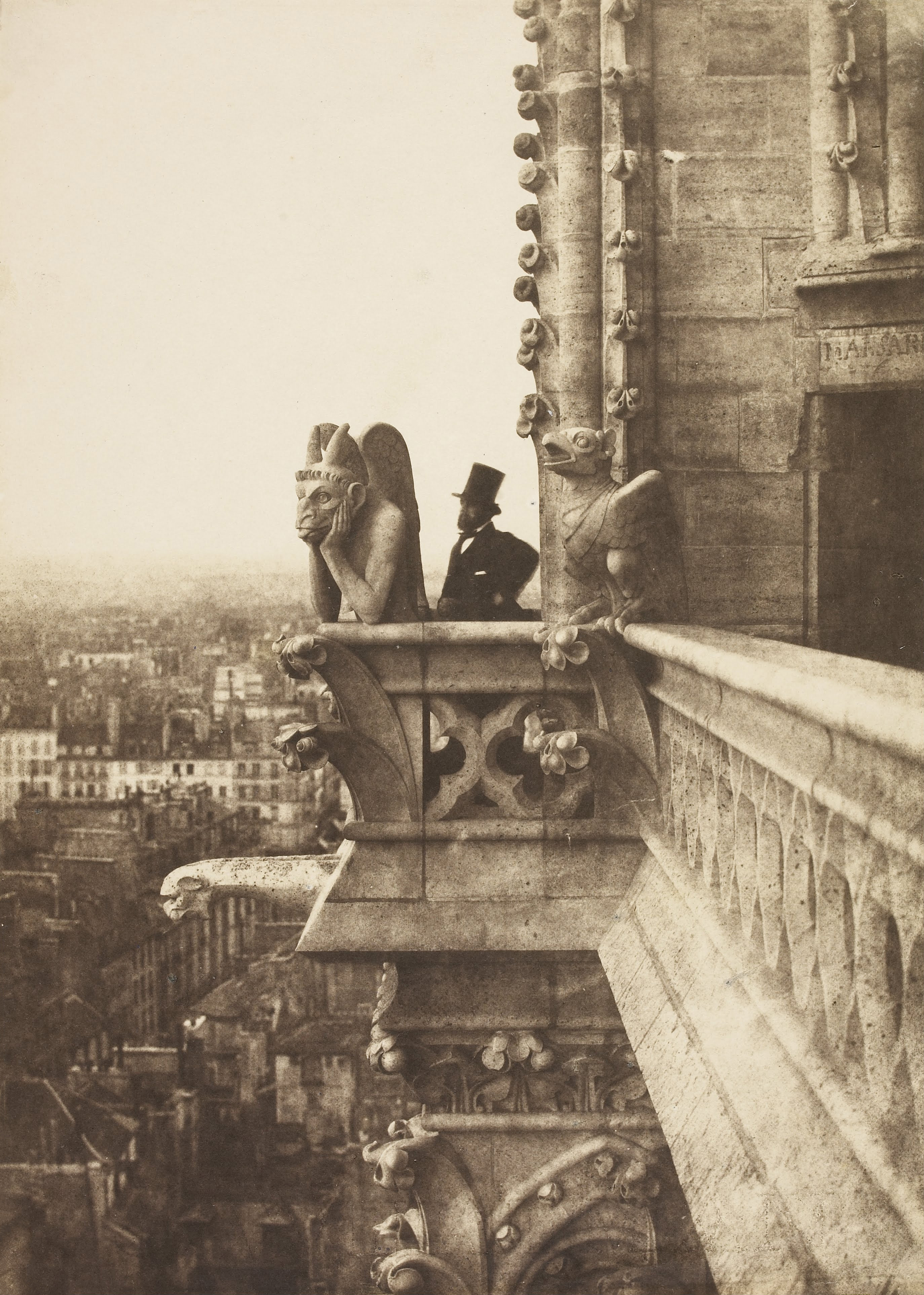This picture is a calotype, a photographic process introduced by William Henry Fox Talbot in 1841 by creating a light-sensible paper with silver iodide. This process produces an original translucent negative from which one can print several positives.
The Stryge is the name of this specific gargoyle, a symbol of the Notre-Dame-de-Paris cathedral, notably because it was created by the famous French architect Eugène Viollet-le-Duc in the 19th century. Both the medium and the subject of this photograph are in their own ways masterpieces of mid-19th-century technology and architecture, as well as science and art.
This gargoyle is a chimera, a fantastic creature that is half-woman and half-dog. The man behind her is Henri Le Secq, a 19th century photographer. Together, they overlook the modern city of Paris, from the high point of view of the glorious heritage of the city. It is a metaphor for how modern and ancient architecture are tangled within the identity of Paris.
- Coraline Méric
P.S. Do you like the Middle Ages and its bizarre art? Here be Medieval dragons! <3


 Charles Negre
Charles Negre